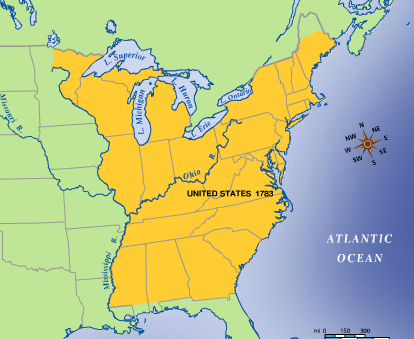


According to the terms of the Missouri Compromise, both new states would prohibit slavery because both were north of the 36✣0’ parallel. Douglas proposed that two new states, Kansas and Nebraska, be established in the Louisiana Purchase west of Iowa and Missouri.
Westward expansion timelime free#
Thanks to the maneuvering of Polk and his allies, Texas joined the union as a slave state in February 1846 in June, after negotiations with Great Britain, Oregon joined as a free state.īut the larger question remained unanswered. Polk was elected to the presidency in 1844. This promised to upset the careful balance that the Missouri Compromise had achieved, and the annexation of Texas and other Mexican territories did not become a political priority until the enthusiastically expansionist cotton planter James K. They petitioned to join the United States as a slave state. In 1837, American settlers in Texas joined with their Tejano neighbors (Texans of Spanish origin) and won independence from Mexico. Thousands of people crossed the Rockies to the Oregon Territory, which belonged to Great Britain, and thousands more moved into the Mexican territories of California, New Mexico and Texas. The Origins of 7 Popular Sports Westward Expansion and the Mexican Warĭespite this sectional conflict, Americans kept on migrating West in the years after the Missouri Compromise was adopted. The westward expansion of the United States is one of the defining themes of 19th-century American history, but it is not just the story of Jefferson’s expanding “empire of liberty.” On the contrary, as one historian writes, in the six decades after the Louisiana Purchase, westward expansion “very nearly destroy the republic.” Manifest Destiny (“Those who labor in the earth,” he wrote, “are the chosen people of God.”) In order to provide enough land to sustain this ideal population of virtuous yeomen, the United States would have to continue to expand. To Jefferson, westward expansion was the key to the nation’s health: He believed that a republic depended on an independent, virtuous citizenry for its survival, and that independence and virtue went hand in hand with land ownership, especially the ownership of small farms. The Louisiana Purchase stretched from the Mississippi River to the Rocky Mountains and from Canada to New Orleans, and it doubled the size of the United States. In 1803, President Thomas Jefferson purchased the territory of Louisiana from the French government for $15 million. Westward Expansion and the Compromise of 1850.This works great with Middle and High School. There are rubrics that go along with the assignments. This project will be completed on one large sheet of paper with the timeline map and coins all on the same side. Your group of four (4) will be creating a timeline, commemorative coins and a map of the major westward expansion done by the Unites States from the period of time following the Revolutionary War up until the Civil War. The second option is "Westward Expansion Timeline, Coins and Mapping" This project can be completed in class if you use the time properly. Requirements for both assignments are located on this sheet. This project will be completed on one large sheet of paper with the timeline on one side and the map on the other (Same side if done neatly). You and a partner will be creating a timeline and map of the major westward expansion done by the Unites States from the period of time following the Revolutionary War up until the Civil War. The first is called "Westward Expansion Timeline and Map"


 0 kommentar(er)
0 kommentar(er)
